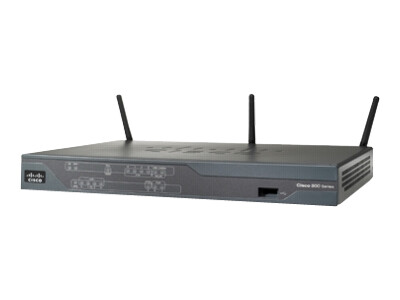Wi-Fi, Bluetooth, ANT+, RFID… Connected devices choose from a variety of wireless technologies to interact with each other depending on their functions and needs, and often combine several protocols. For the regular consumer, this profusion of names and barbaric acronyms can become confusing and make it hard to determine which device is compatible with which. Today, we take a look at some of the most common ones and try to explain their specificities as we learned about them ourselves when preparing for this article!
Wi-Fi
“Wi-Fi” is neither an acronym nor a nickname, it’s actually a brand name owned by a trade organization, the Wi-Fi alliance. Wi-Fi uses radio waves to transmit data wirelessly. The purpose of Wi-Fi is to create a local network of devices communicating with each other in a definite area. The Wi-Fi network is managed by a device called a router and often the device used is actually a modem-router: a router to manage the local network and a modem to open an Internet access for all compatible devices in range. Wi-Fi technology allows for a range going from a few square feet to a couple of square miles, making it ideal for creating a wireless local network within a house, a building or a campus for instance.

Bluetooth
The name “Bluetooth” comes from Danish king Harald “Bluetooth” Gormsson, who united the warring tribes of Denmark in the 10th century. Seriously.
Like Wi-Fi, Bluetooth uses radio waves to transmit data between devices, albeit with shorter wavelength and a shorter range. The primary purpose of Bluetooth is to allow direct wireless communication between two or more devices. Compared with Wi-Fi, Bluetooth has a much shorter range (a few meters at most) and offers less bandwidth (meaning that data transmits slower over Bluetooth than it does over Wi-Fi), but the upside is that you don’t need a router to enable the devices talk to each other. Typical examples of Bluetooth use include mobile phone headsets or wireless computer mice.
Bluetooth smart
Bluetooth smart, also called Bluetooth low energy, is the latest version of the Bluetooth technology and is already available on a few devices, such as the iPhone 4S. Bluetooth smart brings more new features than just lower power consumption, but its main purpose remains the same: enabling devices to communicate when they are relatively close to each other. Bluetooth smart however makes it easier to use, for instance with options for the automatic recognition of one device by another. It also enables a device to lie dormant for a long time with very low energy consumption and to “wake up” only when a companion device becomes active nearby, much like RFID chips work today, as we described in a previous post.
Bluetooth smart and regular Bluetooth devices are not compatible with each other, but manufacturers can choose to implement support for both protocols in their products. The others
The others
Those are the most common, but many other protocols exist to make devices communicate wirelessly at close range. ANT+ for instance is a technology for medical and health sensors designed by Garmin. Near Field Communication (NFC) is a broader term that designates various standards of devices with very short range (up to a couple of feet).
All wireless technologies mentioned so far use radio waves, but other solutions exist. Some older cell phones and PDAs for instance offered connectivity through infra-red. Infra-red as a technology for transmitting data is largely obsolete today because of its very low bandwidth and the need to have both devices not just close to each other but also in line-of-sight. However, infra-red is still used in what remains perhaps the most common occurence in the world of wireless communication between devices: TVs and their remotes.
A beginner’s guide to wireless technologies
May 24, 2012


